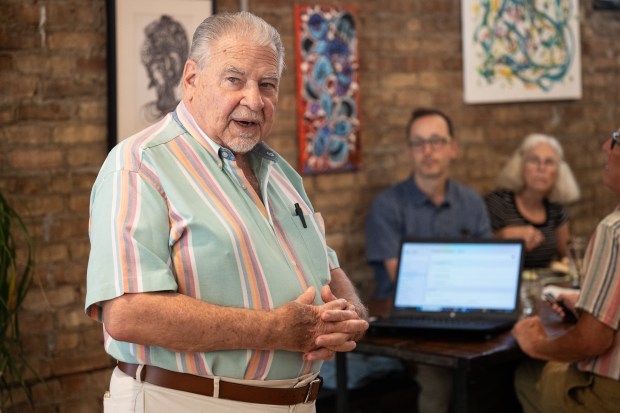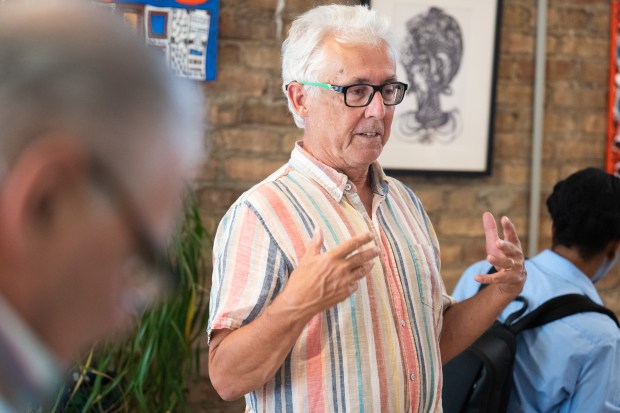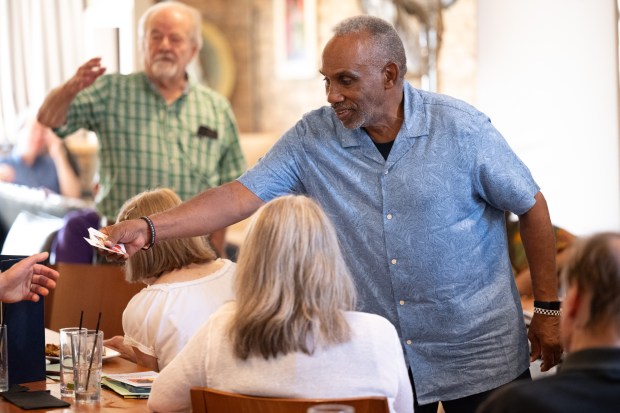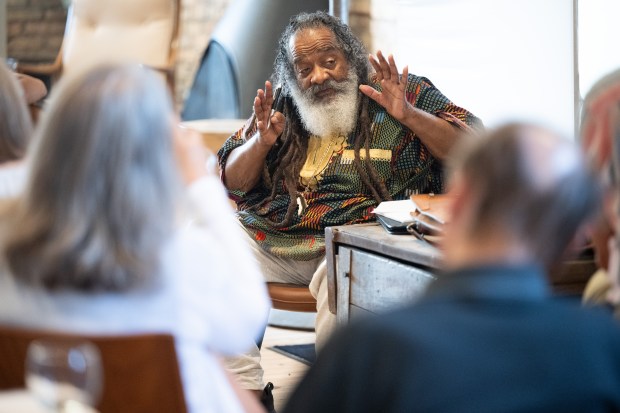History lessons about the Underground Railroad generally omit some important details. Instead of focusing on benevolent white men who helped escaped slaves in their flight to freedom, the Blacks themselves – the freedom seekers – should be the focus.
That’s an argument made by retired Governors State University professor Larry McClellan, who often speaks in presentations from Chicago’s Bronzeville neighborhood to South Bend.
McClellan and Tom Shepherd, executive director of the Little Calumet River Underground Railroad Project, are working to flip the paradigm.
Last week, they spoke at Tiny Coffee Bar in Gary’s Miller neighborhood.
They’re seeking volunteers to help document stories of the escaped slaves who fled to freedom, traveling through Northwest Indiana along the old Chicago to Detroit Road.
“The dilemma is that for the last 170 years, almost all the stories told have been the Underground Railroad stories and not the freedom seeker stories,” McClellan said.
“Most of the time those stories have been about courageous white men that did all this good stuff. The reason for that is because the nature of our society. In fact, in the 19th and 20th centuries, all of those great old histories were written, and they were all written by old white men about old white men.”
Some freedom seekers headed north to Chicago, then took lake steamers traveling east, stopping at the Dunes and Michigan City, then taking trains eastward.
“There are also a handful of Indiana stories about people going straight up and going to Michigan City,” McClellan said.
At least 3,000 freedom seekers made it to the Chicago region. “Eight hundred to 1,500 folks walked right through Northwest Indiana,” he said.
“It’s a remarkable human story,” he noted.
Freedom seekers fled toward Canada, especially after 1850, when the fugitive slave law was passed, allowing slave owners to recapture slaves who had escaped to states where slavery was illegal. “You are not safe anywhere in the United States if you are freed slaves,” Shepherd said.

A number of places in Northwest Indiana would be good places to include interpretative signs to let people know about the Chicago to Detroit Freedom Trail, Shepherd said.
“Each one of these arrows represents a set of stories I have,” he said, showing a map on the large screen.
“We’ve got documented evidence about Tremont and the Underground Railroad,” he said, so the Tremont picnic area near the South Shore’s Dune Park station would be a logical site.
Beverly Shores has an area owned by Shirley Heinz Land Trust that would also make sense.
“We’ve got a remarkable set of stories around Westville,” Shepherd said.
“I believe there are 15 to 19 serious sites that might be looked at in regard to freedom seekers here in Northwest Indiana. And that means, my friends, there is a lot of work to do,” he said. “We’re talking about particulars.”
McClellan has been working on this for years. He’s a history detective, piecing together clues along the way.
He found a list of subscribers to a radical abolitionist newspaper based in Chicago. That helped him track down stories in obituaries and other newspaper articles in which people involved in the Underground Railroad told of helping freedom seekers.

University and public libraries, along with historical societies, have been invaluable.
Construction of the city of Gary, founded in 1906, makes finding specific sites there problematic. “The dilemma we have is when they built Gary in the early 20th century, they just imprinted that grid pattern right on the land,” McClellan said.
Before that, people traveled along long-established routes like the Sauk Trail, much of which became the Lincoln Highway, and the Chicago to Detroit Road, which took freedom seekers and others to Michigan City, dropped south to LaPorte, then headed east through northern Indiana to Detroit.
South Bend has a wealth of stories about the Underground Railroad and the freedom seekers who used it.
Verge “Brother Sage” Gilliam, of South Bend, is president of Providing Options, Promoting Positive Development of Black People.
“We’re connecting the dots,” he said. “We’re trying to match genealogy with African American genealogy,”
Jean Baptiste Point du Sable is widely known as the founder of Chicago. Du Sable lived in Michigan City and took his canoe to Chicago, naming it for the smell of wild onions that grew there. “He couldn’t stand the way it smelled, but it was great for traffic. He got great furs over there,” Gillam said.

Gilliam traces families back to the 1700s. “Four of my ancestors fought in the Revolutionary War, one for the British and the rest for the colonists,” he said. One of the people killed in the war was his ancestor.
“I am a proud diasporan African American man. My people have gone through pure hell in the United States of America,” he said. “We’re not going to be here much longer, so we’ve got to work with our youth to keep this going.”
“We tell stories about how a major wave came through Indiana,” he said. “If we put all this together, that’s an education. Youngsters hear this, it’s a different type of story.”
Promoters hope to get National Park Service recognition of the Chicago to Detroit Freedom Trail as part of the National Underground Railroad Network to Freedom project. Doing so will take more research, more digging into the past.
In Miller, they made a successful pitch and received the promise of help. A grant from Indiana Landmarks is helping, too.
“We’re hoping in October to begin to develop a conversation in the rest of Indiana,” McClellan said.
“This stuff, this history, this is American history,” Gillam said. “We’re giving our kids a big gift.”
Doug Ross is a freelance reporter for the Post-Tribune.





